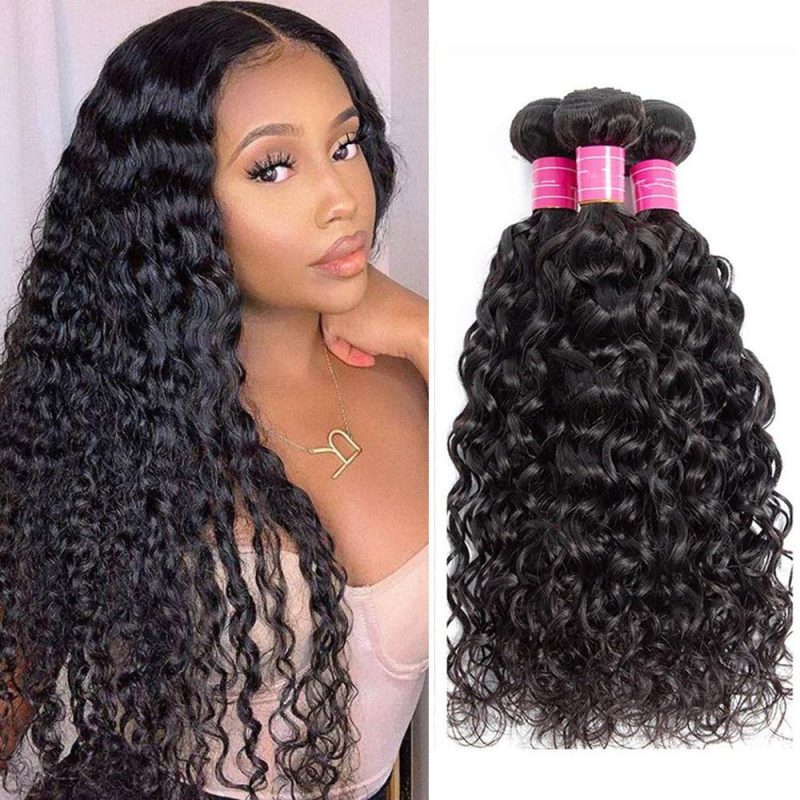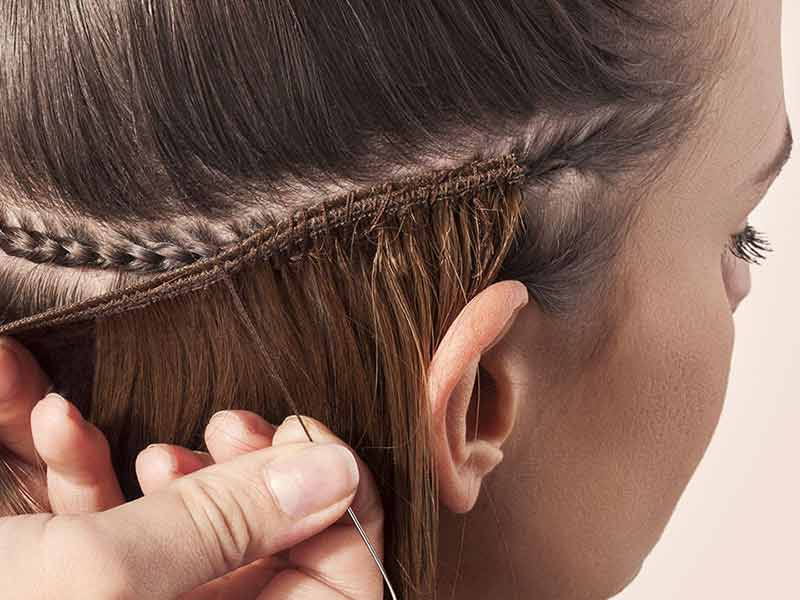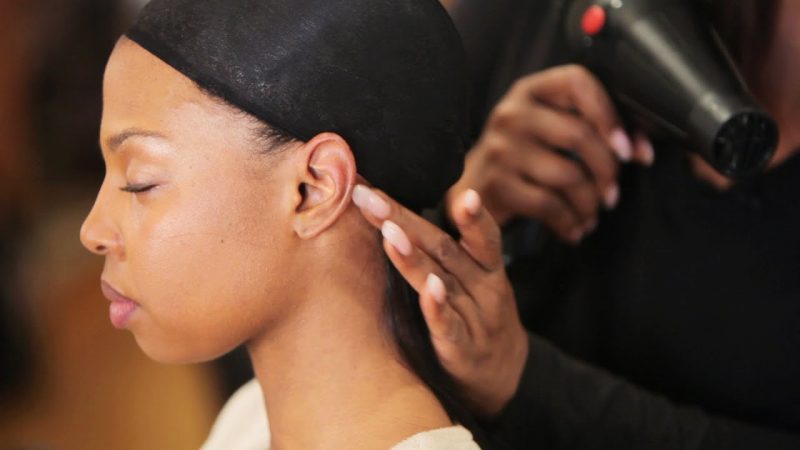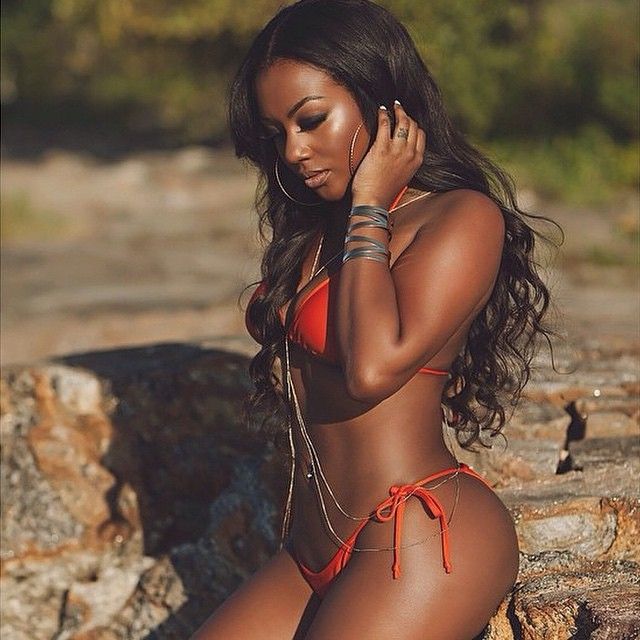Summers can be super hot. In sweltering temperatures, you don’t want to be worrying about if your hairstyle will survive the heat and humidity. During the summer we tend to move around more than in the colder months. We also tend to do things such as swimming and other outdoor activities which can be harsh and expose our hair to the elements.
Human Hair Weave and Wigs are a great choice for protection from damage during hot summer months. Not only do they protect from the weather, but they also give your hair a break from constant combing, brushing, processing and heat styling.
According to the Journal of Cosmetic Science, heat styling appliances can cause significant damage when used frequently or incorrectly and in some cases, damage may be permanent. Damage can also be caused by overprocessing with different chemicals including relaxers and lighteners. All of these reasons are why it is a good idea to sometimes give your hair a break.
What is Hair Weave?

According to NubianPrincessHairShop.com, Weave is also referred to as Hair Bundles, Weave Bundles or Hair Extensions and are strands of hair which are attached to woven tracks secured by a sewing process. They can be bought in both Human and Synthetic Hair, but the Human ones are by far more popular. Good quality bundles will be cuticle aligned, soft, flowing, flexible and will have a nice sheen.
Hair Extensions come in several textures, colors and lengths. Colors include solid and ombre color combinations. Ombre refers to two or more colors in a horizontal formation, solid refers to just one color, while piano colors are side by side and vertically placed. Although less popular, frosted colors, where the formation is vertical like piano colors but more blended are also an option. Popular textures include Deep Wave, Body Wave, Straight and Loose Wave among others. Textures with lower consumer demand include Funmi, Romance Curl and a few others.
How is Hair Weave Attached to the Head?
It takes some practice to install Weave Bundles, but once you get the hang of it, you will master it. There are several ways that weave tracks can be attached to the head, but there are two common ways. One method is called the sew-in method and the other is called the glue-in (bonded) method.
-
Sew-In Method

This method is where the tracks are sewn onto your real hair. The best way to prep for this method is to braid cornrows. If you are new to doing sew-ins, just make sure that there are braids which cover the entire perimeter of the head. Position the other braids in any direction if you are using a mesh weaving cap otherwise you will need to position the braids in the exact direction you want the tracks to lay. Note that you will get the most flexibility when you sew your tracks on a mesh weaving cap.
What is Mesh Weaving Cap?
As the name suggests, it is a cap made from a mesh-like material and is used during the weaving process. The cap is placed over cornrow braids, in order to allow for a seamless sew-in style. When we prep our hair by braiding it in cornrows, this can leave gaps between the braids, creating areas where we would not be able to sew the tracks on. This can leave holes in the style, making it very unattractive and bumpy looking.
To create a smooth and stronger base, it is advised to use a contour mesh weaving cap like the one below. This gives the best fit for most heads, while providing ventilation and fully covering the head. The ear flaps fully cover sideburns, so this is great if you want to pull everything back into a ponytail style. This type of cap is useful when you are creating a completely enclosed style with no leave-out.
This is not the only type of mesh cap available. There are some which come with middle part, crescent part and side part options. There are also some which come completely round with no ear flaps.
-
Glue-In Method (Bonding)

To glue-in your bundles, you will first need to protect your real hair. This is very important since failure to do so before bonding can lead to severe and permanent hair loss. Since bonding glue is made from latex, there is also the chance of allergic reactions occurring if the glue gets into contact with sensitive skin.
The process is fairly simple. Here are the steps:
1. Prepping can be done by braiding the hair in cornrows or if your hair is really short it can be slicked back with gel or your favorite product. Everything needs to be covered with protective product so that the glue does not seep under the cap and make contact with your real hair.
2. Apply a stocking cap to cover the entire head
3. Place the glue on the weft of the tracks and apply to the stocking cap, positioning tracks based on the style you intend to achieve.
4. Press firmly until tacky or you can optionally use a blow dryer to speed up the process.
5. Continue until style is complete.
Best Hair Weaves for Summer

Although there are several types of hair extensions on the market, there are some which are best suited for certain situations. If you frequently visit the beach, you have to deal with sea water and sand. On the other hand if you are visiting the pool, you have to deal with chlorine. Either way at some point your style will be exposed to water. If this is how you spend your summer, a curly weave may be best for you. Curly bundles love water as it makes the curls snap back into place.
When you shampoo your hair after going to the pool or the beach, your curly extensions will stand up well if they are good quality. However, it is not recommended to go into the pool or to the beach with colored bundles as the salt and minerals in the sea water and the chlorine in the pool will strip your hair color, causing it to fade. It is always best to opt for an uncolored natural black instead. Sew-ins are always best because your real hair braids underneath will still be able to be shampooed and conditioned. However, with bonding it is not recommended. Below are the reasons why:
1. Your scalp cannot be shampooed and conditioned as it will be completely covered
2. Even if you attempted to wash a bonded weave, the conditioner will make the glue dislodge and your style will fall apart. 3. Actually, it may fall apart before you leave the beach or the pool.
Since the glue is bonded onto the cap or onto your protected hair, there will be no space between the tracks and the cap or the tracks and your hair. This means that chlorine, salt, etc. can easily settle between the tracks and cause scalp issues and breakage.
What is a Wig?

A wig is a unit with a cap that has hair attached. There are different types of caps and different textures of wigs. Wigs can be made from Human and Synthetic Hair, but Human Wigs are the ones with the highest demand. Lace Wigs and No-Lace Wigs are the types that are the most sought-after ones.
Wigs are available at several different price points. Non-lace ones are the most budget-friendly type. Lace front wigs are great value for money and full lace wigs are the most expensive type.
Best Practices for Summer Wear

There are some practices which are best for wearing wigs in the summer. If you are planning to go to the beach or the pool, a wig is not the best option. If the wig is not installed with adhesives, water pressure from swimming may make the wig loosen, causing you to lose your wig in the process. If you do have your wig installed with adhesives, it is still a bad idea to let your wig be exposed to the elements. Even if you use a very strong adhesive, it will be attached to your skin and there will be cavities under the wig where salt or chlorine can settle. The fact that there would be a lack of proper access to various areas of you scalp, your hair and your skin, leaves you vulnerable to possibly unpleasant repercussions. Things such as allergic reactions, hair loss and breakage can occur. It is best to make sure you cover your entire head with a shower/swim cap which includes the coverage of areas where adhesive is present.
With summer’s hot and humid environment, keeping cool in a wig can be a challenge if you prep your hair incorrectly. Avoid using stocking caps to prep for wig installation. They will keep your head very hot and severely limit scalp ventilation. If you sweat in your scalp, use a mesh wig cap instead. Capless wigs are great for summer. When combined with a mesh wig cap, you head will get the highest level of ventilation, keeping you as cool as possible all summer long.
Conclusion
Both wigs and weaves are options for the summer months. If you are active in the area of water sports, swimming, or you frequently attend the beach, then it is advisable to choose your options carefully. Chlorine and Sea Salt will cause colored bundles to fade so it best to wear natural black bundles. Sew-ins, as opposed to bonded glued-in methods, is recommended as you will be able to get underneath them to shampoo and condition the tracks, your real hair and cleanse your scalp.
Bonded hair is a bad idea as it may fall off when it comes into contact with too much moisture and especially with conditioner. Curly textures are best because when you wash them after swimming, they will welcome the moisture.
If you are wearing a wig, a good idea would be to completely cover your head with a shower cap or swim cap. Make sure that it covers the entire wig and that it is properly secured so the pressure of the water does not cause it to slip off. Whether you choose Extensions or a Wig, just be sure to opt for the option which will keep both your real hair and your installation protected while avoiding any skin and scalp issues.


